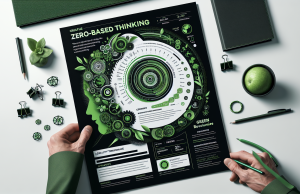In the bustling heart of industry and innovation, diversity and inclusion are words that resonate within the walls of New York businesses. Yet, while these terms are often lauded in company mission statements and embossed on the walls of trendy corporate offices, one questions the depth of their roots. It’s time to look beyond the buzzwords and peel back the layers of what diversity and inclusion genuinely mean in the workplace today.
The Statue of Liberty stands tall, a symbol of new beginnings and a melting pot of cultures, a guiding beacon that should also light the way for our companies. Yet, despite years of discussion and advocacy, many New York businesses are still grappling with how to effectively incorporate these values into their daily practices.
Take for instance, a recent study which showed a concerning trend: despite good intentions, many diversity and inclusion initiatives fail to make a significant impact, with some even causing backlash or reinforcing stereotypes. The crux of the matter lies in moving from performative gestures to actual, sustainable culture shifts within the organization.
So how have some companies succeeded where others have not? Case studies reveal that success often comes down to authenticity and a relentless commitment to change. For example, a New York tech startup implemented mentorship programs that paired senior leaders with diverse entry-level employees, fostering organic relationships and growth opportunities. Over time, this not only increased the diversity of thought within the leadership team but also improved overall employee satisfaction and retention.
Conversely, there are cautionary tales of businesses that have stumbled. One such company launched a high-profile diversity initiative, yet failed to address unconscious bias within its hiring processes. The result was a campaign that looked good in press releases but did little to change the staff composition or company culture, leading to cynicism and a lack of trust among employees.
For businesses truly committed to change, it’s about creating an environment where diverse perspectives aren’t just accepted, but are unequivocally valued. This means introducing comprehensive training programs that go beyond the standard HR protocols, actively seeking out underrepresented voices for leadership positions, and continuously evaluating and adjusting internal policies to ensure equal opportunities for all.
The impact of such a cultural shift is far-reaching. When employees from different backgrounds and with varying perspectives feel valued and heard, their engagement and productivity rise. A workspace humming with diverse voices is a hotbed for innovation, mirroring the vibrancy and diversity of New York itself. Moreover, a company’s commitment to genuine inclusivity bolsters its reputation, making it a magnet for top talent while also enhancing its appeal to a diverse customer base.
In conclusion, while the journey toward true diversity and inclusion is continuous and complex, it is heartening to see that some New York businesses are making strides in the right direction. By prioritizing authenticity, accountability, and action, companies can ensure that ‘diversity’ and ‘inclusion’ are more than just buzzwords on a page, but the very pillars upon which they build a more vibrant, equitable, and successful future.
For those ready to embark on this journey, the time is now to weave diversity and inclusion into the very fabric of their corporate identity. The Work Times stands committed to chronicling these stories, to inspire and drive forward the collective mission of creating workspaces that reflect the world in which we all wish to prosper.




























